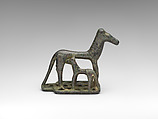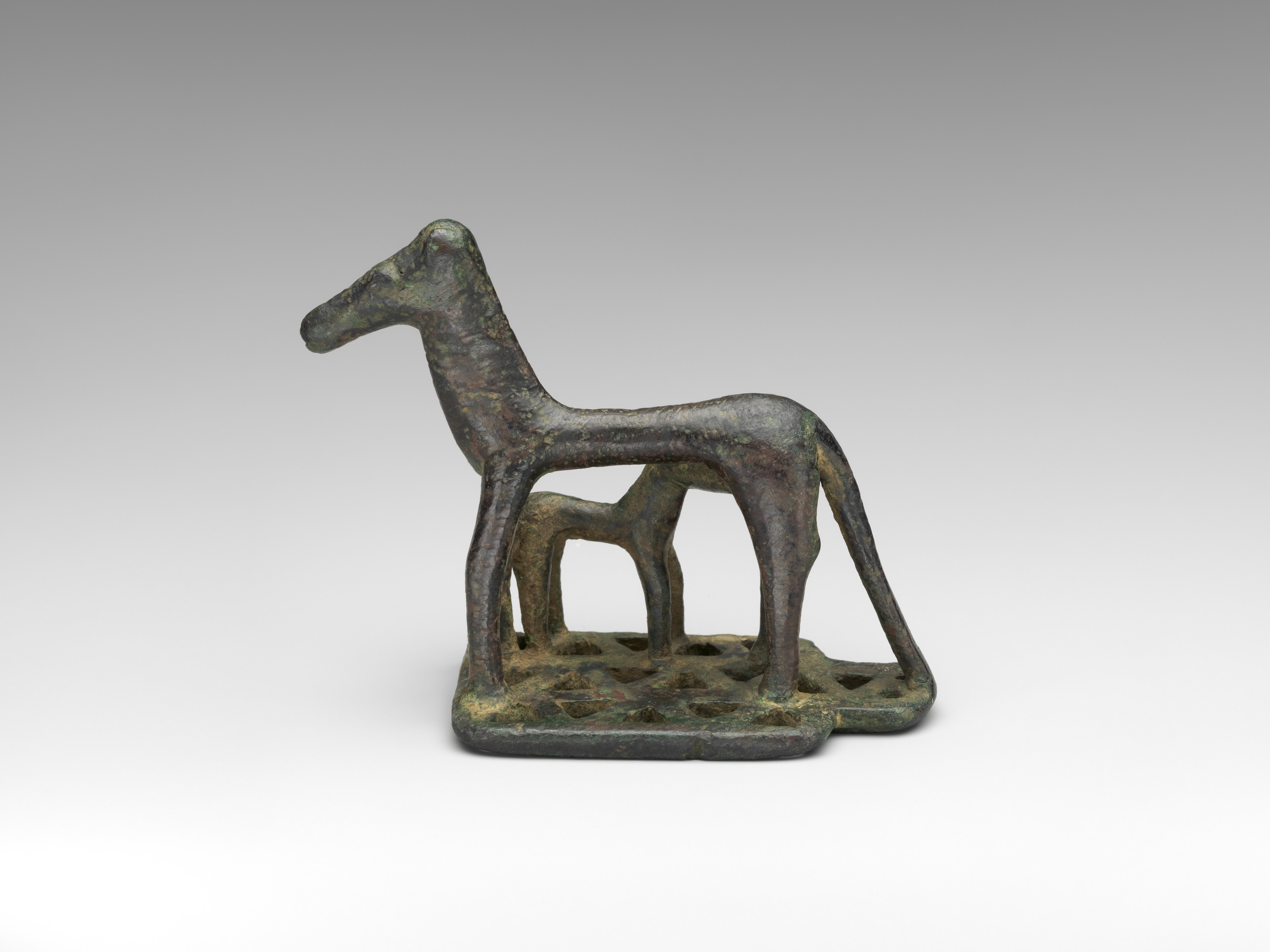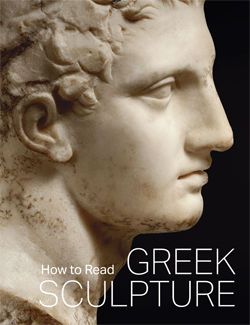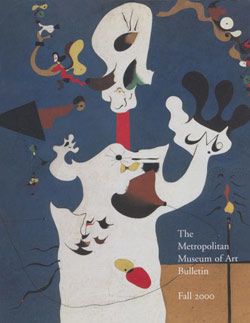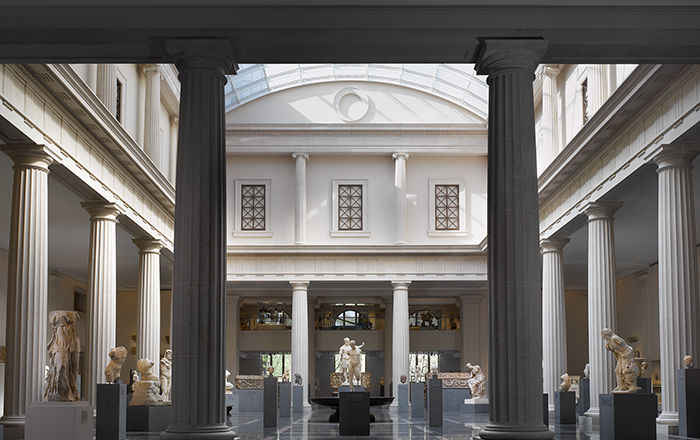Bronze mare and foal
Here, a mare is nursing her foal in a less austere manner when compared to other artworks of the period. The body parts are cylindrical and rubbery with minimal articulation. The figurines are fixed on a rectangular plinth with three rows of triangles pierced straight through. Aesthetically, this elongated base significantly influences the three-dimensional effect of the piece. Such bases with openwork (perhaps used as stamps) appeared after the middle of the 8th century BCE and disappeared towards the end of the Geometric period.
Thousands of early bronze horses were found in most sanctuaries of ancient Greece, especially in Olympia. They served primarily as personal offerings to the gods.
This image cannot be enlarged, viewed at full screen, or downloaded.
This artwork is meant to be viewed from right to left. Scroll left to view more.
